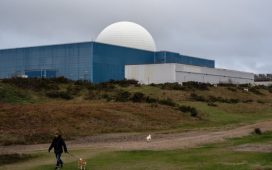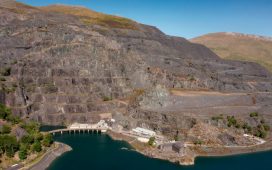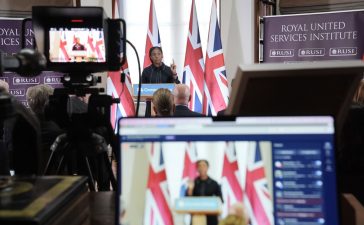The government has ruled out burying electricity cables underground as part of its energy strategy, which will involve the unrolling of hundreds of pylons across the British countryside, Ed Miliband’s clean energy adviser has said.
Chris Stark, the former leader of the Climate Change Committee, now heads the government’s “mission control” department for decarbonising the grid by boosting renewable energy and building connections across the country.
“The government is very clear that it will cost too much [to put cables underground]. It is not my intention that we will push for a plan [in which] we will [put] underground all our cables – our departmental analysis shows it will take too long, and the benefits, frankly, are, I think, overstated … So we don’t want to end up in a situation where we delay the whole project by looking at those things,” he told a Green Alliance event in London.
To bring communities on board, Stark said the Department for Energy Security and Net Zero was looking at an advertising campaign similar to one conducted by the government 60 years ago when it built high-voltage cables across the country. He said people would benefit from much cheaper electricity when it was windy, and further community benefits for those who live near infrastructure would be laid out by ministers shortly.
Campaigns have been set up in some of the areas in which pylons will be built, arguing for greater sensitivity to local communities and to wildlife and landscape needs. One option raised by campaign groups was putting the cables underground instead.
Projects proposed for the great grid upgrade include 420 pylons, each 50 metres (164ft) high, running from Grimsby in Lincolnshire to Walpole, near King’s Lynn in Norfolk, and a 112-mile (180km) power line from Norwich in Norfolk to Tilbury, Essex. Other pylon schemes are proposed from Chesterfield to Willington in Derbyshire, and from East Yorkshire to High Marnham, Nottinghamshire.
In his previous role, Stark recommended the target date for decarbonising the UK’s electricity to be 2035 – the goal the previous government adopted. But, he told the audience, he was asked by Keir Starmer, the prime minister, whether the country could achieve that goal by 2030.
“The more observant among you will have noticed that my recommended target when I was at the CCC was not 2030, it was 2035, which we felt to be a very ambitious target at the time,” Stark said, “and Keir Starmer and [the secretary of state for energy security and net zero] Ed Miliband asked, I think, quite an interesting question, which is: ‘Why can’t we do it earlier?’ And I and a few others sucked through our teeth and told them: ‘Well, it might be possible to do it sooner, but only if you pull all the right levers in the right order.’ And they didn’t blink at that.”
after newsletter promotion
He said that in order to meet the goal he was “not pissing about” in making the steps needed, including boosting the take-up of heat pumps, electric vehicles and renewable energy.









